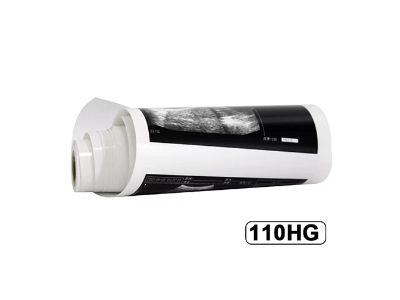What is the most commonly used paper speed for ECG?
When it comes to monitoring heart, one of the very most typical tests performed is the electrocardiogram or ECG. ECG machines work by recording the signals that are electrical create your heart beat. They help physicians diagnose heart conditions like arrhythmia, heart attack, and more. Nevertheless, to get accurate readings an ECG machine, the right Paper speed should be used. We are going to take a peek at most commonly used Paper speed for ECG tests and all you require to check out using it.

What Is Paper Speed in ECG?
Paper speed is the speed of which an ecg paper machine records the guts's electrical signals. These signals are then printed on graph Paper for doctors to read and interpret. The Paper rate essentially determines how much time between two consecutive lines on the graph Paper. Different Paper rates are used dependent on the nature of ECG client and test age.
What's The Most Used Paper Often Speed for ECG?
The most commonly used Paper speed for ECG is 25 mm/s. This rate happens to be used for a long time and has proven to provide readings that could be accurate patients of all of the ages. ECG machines are calibrated to record heart signals at a set Paper rate, and 25 mm/s is the default rate for most ECG machines.
Advantages of Using 25 Mm/s Paper Speed for ECG
Using 25 mm/s Paper speed for ECG has advantages being several. Firstly, it provides a certain and accurate representation of heart's electrical signals. This might be necessary for doctors to accurately diagnose heart conditions, which can keep your self lives. Secondly, the speed is standard across ECG machines, making it easy to compare readings that are very results that are different. Finally, using 25 mm speed/s Paper persistence in readings, which makes it simpler for doctors to spot changes and habits as time passes.
Innovation in ECG Machine Technology
ECG machine technology is here a very technique long the first machine developed in the early 1900s. Today, ECG machines tend to be more accurate, efficient, and easy to use than previously. Modern ecg medical paper come with enhanced functions such as computerized analysis, wireless connectivity to patient records, and more. These features help medical practioners diagnose heart conditions faster, saving time and lives.
Safety of Using 25 Mm/s Paper Speed for ECG
Using 25 mm/s Paper speed for ECG is safe and poses no danger to patients. The only thing that patients need to be familiar with is the fact that connected electrodes to their upper body will often cause mild vexation. However, this discomfort is temporary and disappears after the test is completed.
How to Use 25 Mm/s Paper Speed for ECG
Using 25 mm/s Paper speed for ECG is easy and simple. The technician shall attach electrodes to the in-patient's chest, which will record the center's electrical signals. These signals are then printed on graph Paper at a level of 25 mm/s. The graph Paper is then analyzed by the doctor to diagnose any heart conditions or abnormalities.
Quality of ECG Tests Using 25 Mm/s Paper Speed
ECG tests using 25 mm/s Paper speed are of high quality and accurate. The rate guarantees that the center's electrical signals are recorded correctly, providing doctors with clear and exact readings. Additionally, modern 3 channels ecg paper machines are built with anti-noise filters and artifacts reduction features, which prevent noise and other disturbance, enhancing the precision and quality of ECG tests.
Applications of ECG Tests Using 25 Mm/s Paper Speed
ECG tests using 25 mm/s Paper speed have an applications that are few the field of cardiology. They are used to diagnose an array of heart conditions, including arrhythmia, coronary arrest, heart failure, and more. ECG Tests may also be used to monitor heart function during data surgery and recovery, assess the potency of medications, and detect modifications in heart task with time.
Comments
Post a Comment